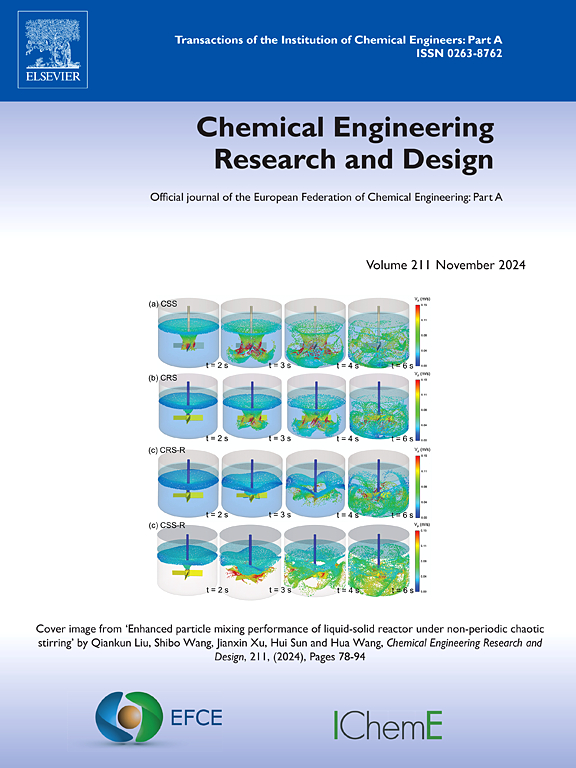Experimental optimization of wetting agents for different coal types and study of wetting mechanisms
IF 3.7
3区 工程技术
Q2 ENGINEERING, CHEMICAL
引用次数: 0
Abstract
This study investigates the impact of various wetting agents on the wetting characteristics of coal samples exhibiting different degrees of deterioration. Initially, surface tension and settling time were assessed to determine the optimal ratios of wetting agents. Subsequently, the interaction between the coal surface and the wetting agents was examined utilizing scanning electron microscopy and energy-dispersive X-ray spectroscopy. Finally, Fourier transform infrared spectroscopy and X-ray photoelectron spectroscopy were employed to analyze the alterations in the functional group content of the coal samples following treatment with the wetting agents. The results showed that the surface carbon content of lignite decreased by 27.64 % and the oxygen content increased by 23.59 % after 0.5 % SLES treatment, while the surface carbon content of bituminous coal and anthracite decreased by 13.70 % and 14.12 %, and the oxygen content increased by 13.57 % and 13.13 % after 0.6 % AEO-9 treatment, respectively. The content of hydrophilic groups (OH, C![]() O, C-O, C-O-C) increased significantly, while the content of hydrophobic groups (C-C, CH, CH3, CH2&CH3) decreased significantly, indicating that the wetting agent can improve the wettability of coal samples by changing the content of hydrophilic and hydrophobic functional groups on the surface of coal. The results of the study can provide guidance for different coal mines to preferably select efficient wetting agents to wet the coal body, which is of great significance to improve the wettability of coal dust. which contributed to an improvement in their hydrophilicity. The results of this research possess considerable practical implications for the control of coal mine dust.
O, C-O, C-O-C) increased significantly, while the content of hydrophobic groups (C-C, CH, CH3, CH2&CH3) decreased significantly, indicating that the wetting agent can improve the wettability of coal samples by changing the content of hydrophilic and hydrophobic functional groups on the surface of coal. The results of the study can provide guidance for different coal mines to preferably select efficient wetting agents to wet the coal body, which is of great significance to improve the wettability of coal dust. which contributed to an improvement in their hydrophilicity. The results of this research possess considerable practical implications for the control of coal mine dust.
求助全文
约1分钟内获得全文
求助全文
来源期刊

Chemical Engineering Research & Design
工程技术-工程:化工
CiteScore
6.10
自引率
7.70%
发文量
623
审稿时长
42 days
期刊介绍:
ChERD aims to be the principal international journal for publication of high quality, original papers in chemical engineering.
Papers showing how research results can be used in chemical engineering design, and accounts of experimental or theoretical research work bringing new perspectives to established principles, highlighting unsolved problems or indicating directions for future research, are particularly welcome. Contributions that deal with new developments in plant or processes and that can be given quantitative expression are encouraged. The journal is especially interested in papers that extend the boundaries of traditional chemical engineering.
 求助内容:
求助内容: 应助结果提醒方式:
应助结果提醒方式:


